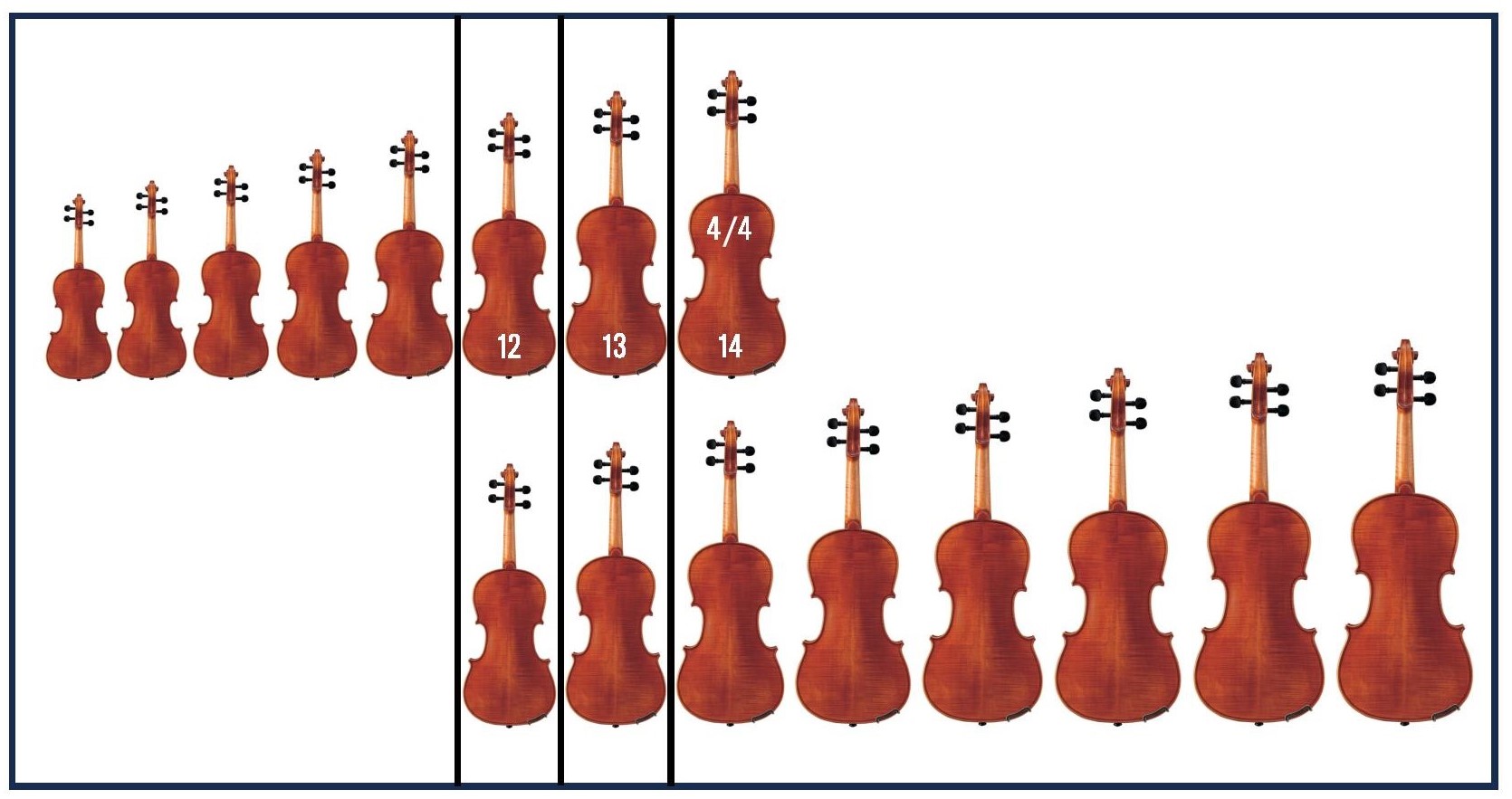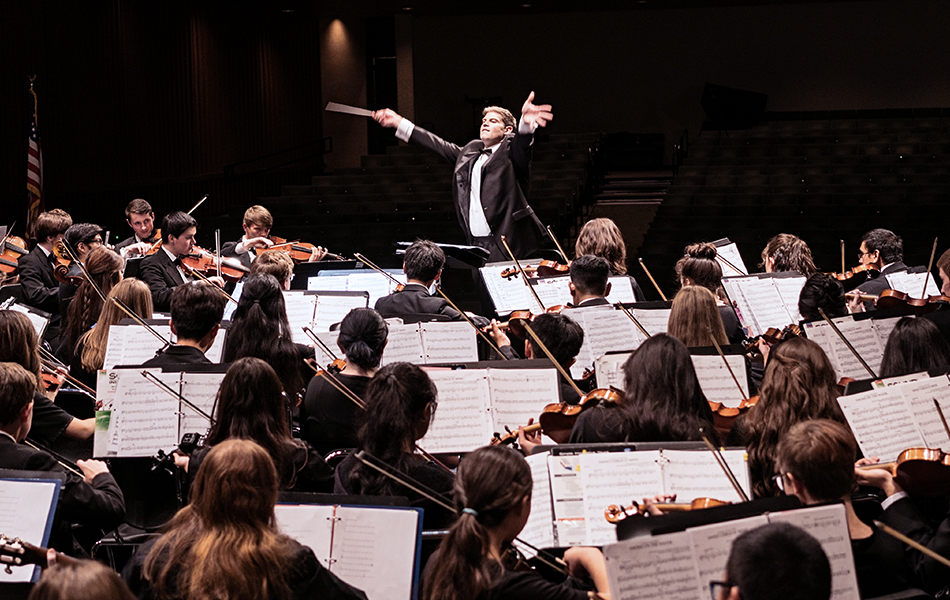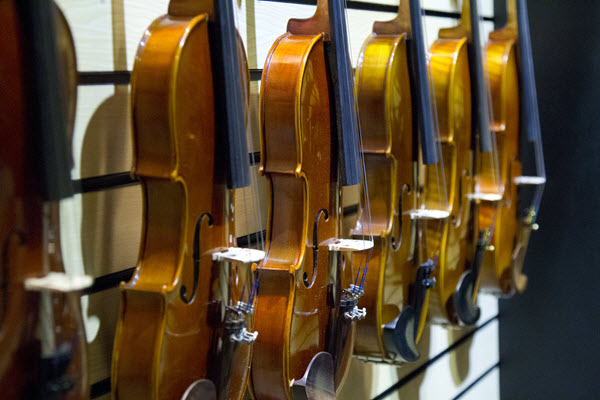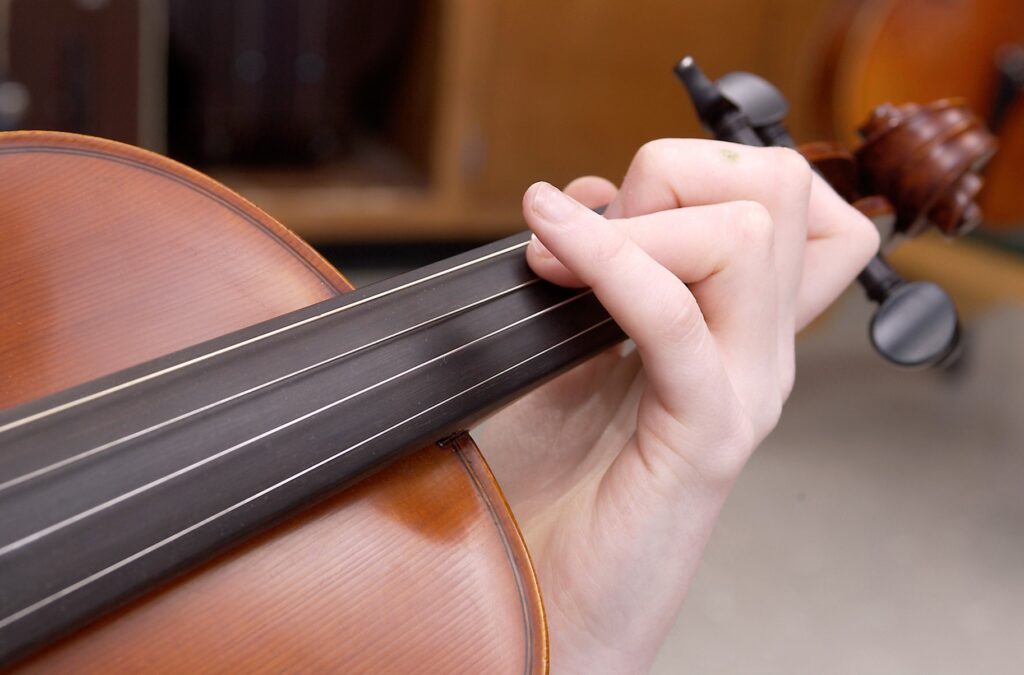What’s the Difference Between Violin and Viola?
It’s not just a matter of size.
A violin and a viola look somewhat alike, but in fact there are numerous differences between the two — not just size, but also variations in tone and overall construction — even the bows that are used to play them.
Let’s take a deep dive into how the two instruments differ from one another.
SIZE


In general, a viola is slightly larger than a violin, but each of these instruments actually have variable sizing depending on age, arm length and finger length.
Stringed instruments are measured from the bottom of the lower bout (the edge of the instrument) to the top of the upper bout; the neck and scroll aren’t used in “size” measurements. Violins are measured in fractions, beginning at 1/32 (or 7″) up to 4/4 (or 14″), also known as “full size.” Because violins can be made so small, kids as young as two years old can begin playing them.
Violas, on the other hand, are sized in inches, not fractions. They range from 12″ all the way up to 18″ in body length. A full size (4/4) violin is exactly the same length as a 14″ viola, but the construction of the instrument is a bit different to accommodate the lower strings and deeper tone. (See below for more information.) A “full size” viola usually references any violas from 15″ to 16.5″. These are the most common sizes for adults.

Playing an instrument of the correct size is extremely important. An orchestral string instrument that is too small for you won’t allow you to properly navigate through all the notes on the fingerboard, while if you play an instrument that’s too large, you may not have the reach to hit all the notes comfortably. Sizing for stringed instruments is best done by an instructor or a professional at your local music store so they can ensure you’ll have the best fit possible.
CONSTRUCTION
Violins and violas are constructed somewhat differently from one another. As shown in the illustration below, a viola’s body has wider and thicker sides (also known as the ribs of the instrument). A viola will also sometimes incorporate thicker front and back plates (the tops and bottoms) to further enrich its deep, warm tone.

TONE
Speaking of tone, have you ever had the opportunity to hear an orchestra perform? If you listen closely to the strings, you’ll often hear a sweet, clear melody, and then a darker, richer tone gliding gently behind it. The collaboration of these two beautiful voices highlights some of the main tonal differences between violin and viola.
Orchestral stringed instruments such as violin and viola are tuned in fifths. The violin is the soprano voice of an orchestra, and is tuned E5, A4, D4, G3 from the highest (or thinnest) string to the lowest (or thickest). This, along with its construction, gives the violin a sweet, crisp tone that provides an orchestra with a clear melody and leading voice. The viola is considered the alto voice, and is tuned a perfect fifth below a violin (A4, D4, G3, C3). The first string on a viola begins on the second string of a violin, as shown below. This allows the viola to not only provide beautiful harmonies with the violin, but warmer undertones as well.

Some contemporary electric violins such as the Yamaha YEV-105 have five strings instead of four; the extra string adds the low C found on the viola. These kinds of instruments are widely used in electric orchestras as well as jazz, rock and pop bands — even for solo performances.

BOW
Violin bows and viola bows are also different. Viola bows are a bit longer in length, and have a thicker tip, but the most obvious way to spot the difference is in the frog — the square-ish part at the bottom of the bow near the tightening screw into which the horsehair feeds. On violin bows, the frog has a sharp back (usually at a 90-degree angle), while on a viola bow the frog has a more rounded, smooth back. Why is this part called a frog? There are many theories but no conclusive answer! Theories include everything from horse hooves to the vice used in its construction to its overall appearance.

Even with all these differences, violins and violas have worked seamlessly together for hundreds of years to create beautiful, nuanced music. The next time you’re at an orchestra concert or are listening to the soundtrack of your favorite superhero movie, see if you can hear the differences between the rich, earthy tones of the viola and the sweet melodic voice of the violin. If you’re looking to learn to play, choose the instrument that speaks to you the most, make sure you get the right size, and remember, practice makes progress!















